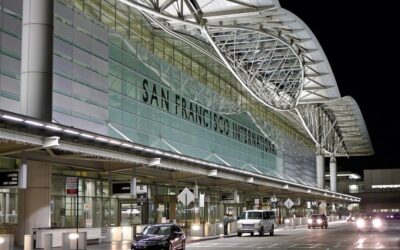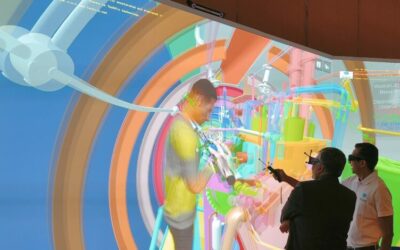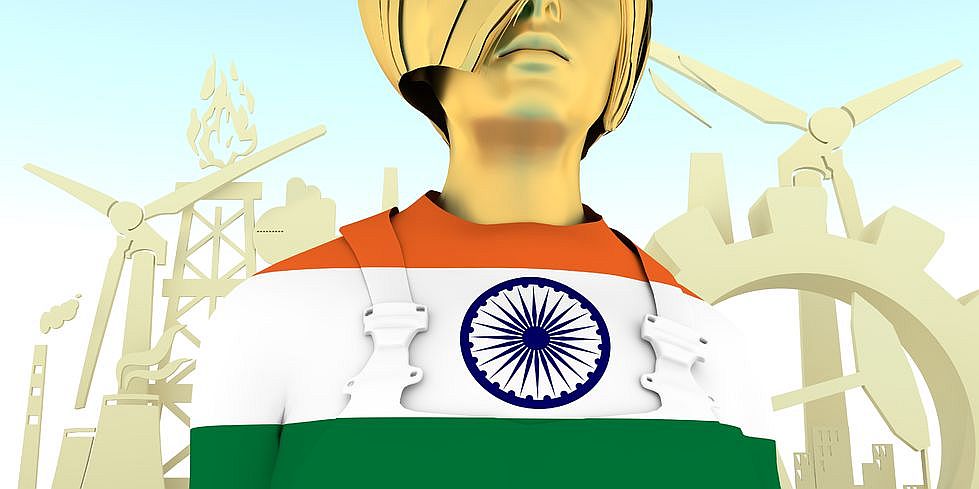According to Mr Jayant Sinha, Union Minister of State for Civil Aviation, Government of India, the country is expected to become the largest domestic civil aviation market in the next 10 – 15 years. IATA says India will displace UK for the third place by 2025.
India’s passenger traffic grew at 16.52 per cent year-on-year (YoY) to reach 308.75 million. It grew at a CAGR of 12.72 per cent during FY06-FY18.
Domestic passenger traffic grew YoY by 18.28 per cent to reach 243 million in FY18 and is expected to become 293 million in FY20E. International passenger grew YoY by 10.43 per cent to reach 65 million in FY18 and traffic is expected to become 76 million in FY20E.
India’s middle class is increasingly opting to fly to domestic and international destinations, and this is creating a surge in demand for air travel. To meet this demand, India’s private airlines have major expansion plans and have already ordered new aircraft.
However, airport infrastructure in India is not keeping up with this projected growth and demand. In fact, there will be a need for 55 new (greenfield) airports by 2030 to keep up with traffic growth. Airports in India are already operating beyond their design capacity.
SITA is using technology to solve challenges in the aviation industry around the world. We asked Maneesh Jaikrishna– Vice President, Indian Subcontinent, Eastern & Southern Africa SITA, about his plans for the Indian aviation industry. We see that SITA has already achieved a lot at Indian airports, in terms of infrastructure modernisation. It is helping major Indian carriers to save on operational costs through pay-as-you-use models.
Here is a detailed look at SITA’s achievements and its plans to transform the Indian aviation industry.
DC.Can you describe how SITA is transforming the travel experience for air passengers in a crowded and fast-growing aviation market like India?
 Maneesh Jaikrishna:As per the latest report by CAPA, India’s airports have handled 308 million passengers in FY2018, which is more than six times the 59 million handled in FY05. We at SITA strongly believe that technology will be a key factor that will help India airlines and airports manage this burgeoning growth. SITA is working closely with the Indian airports and is currently present in 45 of them, in order to meet the requirements of an enhanced passenger experience, and an increased capacity.
Maneesh Jaikrishna:As per the latest report by CAPA, India’s airports have handled 308 million passengers in FY2018, which is more than six times the 59 million handled in FY05. We at SITA strongly believe that technology will be a key factor that will help India airlines and airports manage this burgeoning growth. SITA is working closely with the Indian airports and is currently present in 45 of them, in order to meet the requirements of an enhanced passenger experience, and an increased capacity.
We are providing technology solutions such as CUTE (common-use terminal equipment), CUSS (common-use self-service) and BRS (Baggage Reconciliation System). These solutions help smoothen the flow of passengers through the airport, which ensures faster and efficient flow of passengers. This is fundamental to increasing the capacity of an airport without the need to expand airport in brick and mortar. In this direction, Mumbai airport has taken pioneering step to implement Self-service Bag Drop in both domestic and international terminals, allowing passengers that have already checked in online to quickly tag and drop their baggage, before heading directly to the gate. SITA also has Airport Operations Command and Control (AOCC) in multiple airports which allows collaborative decision-making for all the airport operators in the day-to-day operations, and enables efficient utilization of airport infrastructure at the airports in respective cities it has been deployed in. These solutions have transformed the passenger’s overall travel experience, making it seamless and helps in managing passenger traffic.
As part of our focus on innovation, we are exploring technologies such as Artificial Intelligence, blockchain and biometrics. For example, blockchain is a technology that could drive collaboration. We also see biometrics as a key technology to streamline passenger flow in the airport and across multiple stakeholders including airlines, airports and control authorities.
DC:How is SITA working with the Ministry of Civil Aviation and other aviation authorities in India to modernise existing airports or to build new ones?
Maneesh Jaikrishna:At SITA, we work closely with the Airports Authority of India (AAI) and support AAI’s vision of making India a major Asia Pacific hub for aviation. As the key technology provider to AAI, SITA contributes to airport expansion, playing a key role in master planning new terminals and expansions to ensure that new airports are operational as scheduled.
SITA is enabling the transition from dedicated infrastructure to common-use technologies, which allow multiple airlines to use the same infrastructure. This is bringing significant space and cost savings at 45 Indian airports, while improving the throughput of passengers. There are 360 common-use self-service kiosks deployed across these airports, helping around 20 per cent of passengers fast track their journey. SITA’s Airport Management System application is at the core of Airport Operations Control Centres (AOCCs) for 12 AAI airports and Mumbai International Airport. It is facilitating efficient airport management, enabling improved resource allocation through automation and quicker decision making; optimizing the use of airport resources; providing better synchronisation between operations, commercial and security, and centralised control over operations of all stakeholders; paving a path for Airport Collaborative Decision Making (ACDM). SITA is actively engaged with Indian airport operators to bring self-service gates, bag drop solutions and e-Gates, each contributing to more efficient passenger flow. In this direction, Mumbai airport has taken a pioneering step to implement self-service Bag Drop in both domestic and international terminals.
DC: Indian skies will get crowded as private airlines expand their fleets with hundreds of new aircraft. What steps are you taking to ensure safety in the skies?
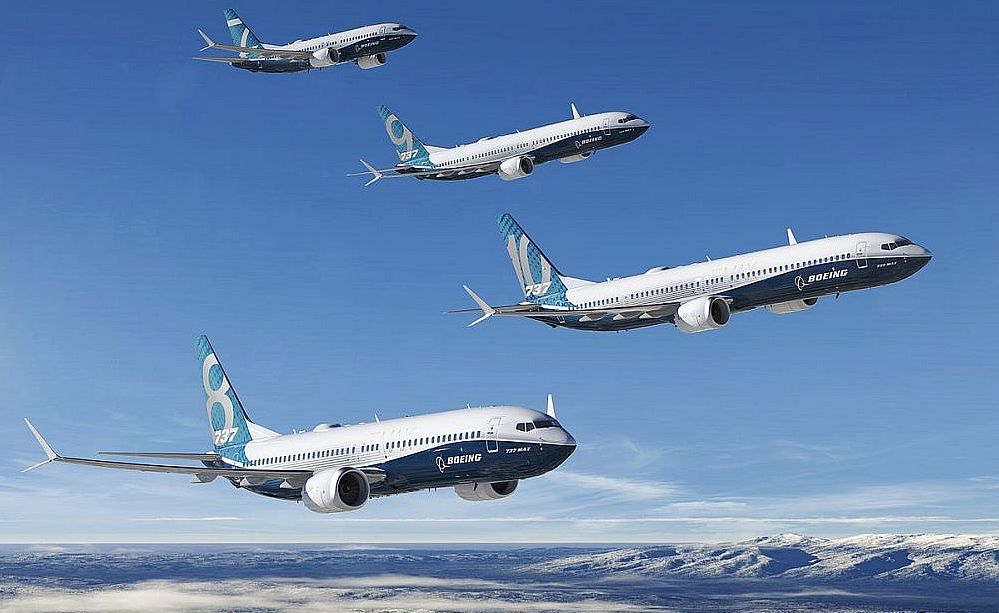 Maneesh Jaikrishna:Serving about 90 per cent of airlines operating in India since 2008, SITA is laying the foundation for efficient border management, and helping ensure the safety of Indian skies. SITA facilitates airline-to-government interactions. It works closely with the Bureau of Immigration to centralise Advance Passenger Information System (APIS) data delivery, and has supported the Ministry of Home Affairs (MHA) in enabling airlines to comply with MHA’s 2008 mandate for outbound APIS.
Maneesh Jaikrishna:Serving about 90 per cent of airlines operating in India since 2008, SITA is laying the foundation for efficient border management, and helping ensure the safety of Indian skies. SITA facilitates airline-to-government interactions. It works closely with the Bureau of Immigration to centralise Advance Passenger Information System (APIS) data delivery, and has supported the Ministry of Home Affairs (MHA) in enabling airlines to comply with MHA’s 2008 mandate for outbound APIS.
SITA has taken the following initiatives towards ensuring safety:
- Increasing capacity by improving efficiency of Indian air traffic control communication over data link, providing pan-India VHF coverage, enabling air–to-ground communication (ACARS) use by all airlines via a total of 38 remote ground stations (RGS).
- Enabling predictive maintenance through the acquisition and analysis of real-time aircraft data, avoiding unplanned maintenance during turnaround, and improving reporting.
- Enabling improved air navigation efficiency and safety through complete integration from air traffic control to cockpit.
- Reducing turnaround time by automating communication between pilots and operational control.
Being the global leader in border management solutions, SITA combines passenger data risk assessment and sophisticated tools for processing passengers at the border, and for managing the nation’s border operations. SITA’s iBorders Advanced Solution is an integrated solution that provides governments with a complete set of capabilities to modernize border security through information, intelligence, optimized interactions with travelers and comprehensive insights to enhance every aspect of border operations. iBorders Advanced Solution is capable of transforming border operations and improving the passenger experience. It ensures that the government agencies always have the right information at the right time to make better-informed decisions. These solutions allow governments to know who is coming in and leaving the country through the airports at any point in time. Governments can therefore accurately identify potential risks as early as possible, in the border management process at the point of departure, while ensuring passengers can be facilitated through the airports quickly.
DC: How can SITA help improve baggage handling at airports?
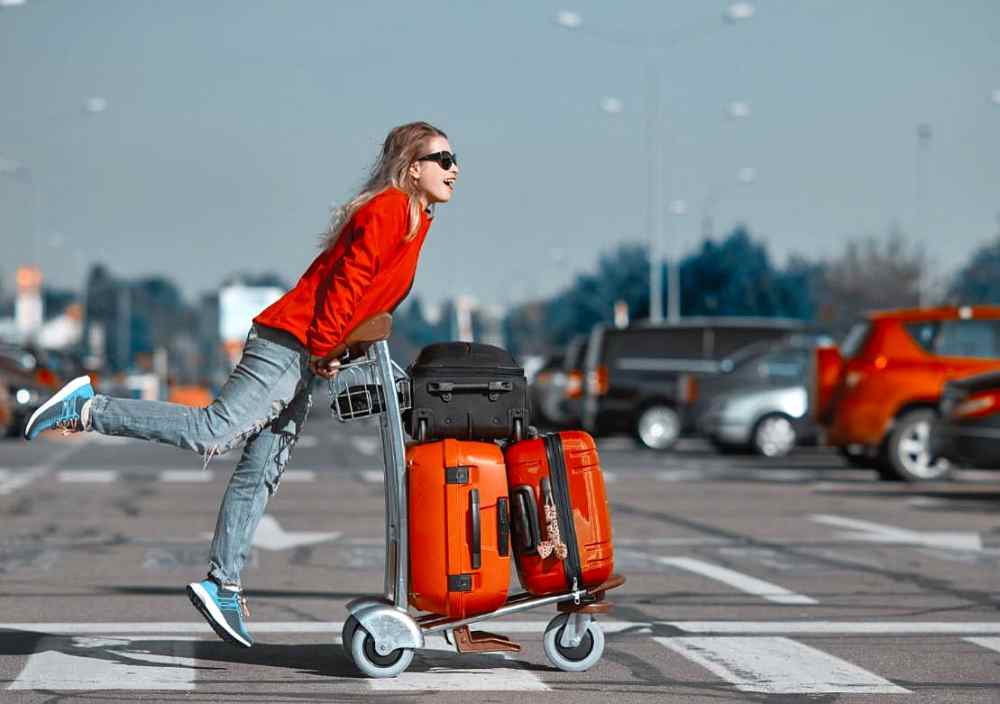 Maneesh Jaikrishna:Our focus over the past few years has been to help IATA member airlines meet the requirements of Resolution 753, which requires airlines track baggage at four key points: check-in, loading onto the aircraft, transfer, and arrivals. The IATA resolution has brought a sharp focus on the potential for further improvements in baggage management.
Maneesh Jaikrishna:Our focus over the past few years has been to help IATA member airlines meet the requirements of Resolution 753, which requires airlines track baggage at four key points: check-in, loading onto the aircraft, transfer, and arrivals. The IATA resolution has brought a sharp focus on the potential for further improvements in baggage management.
We at SITA have taken up the challenge and are helping airlines and airports quickly and effectively meet the new tracking requirements. Working with our industry partners, we have developed new, economical infrastructure enhancements for BagJourney. These offer the choice of handheld devices for scanning or scanning arches that are quick to install. Airlines and airports have different needs so we have ensured that the various hardware options are easily integrated into our BagJourney solution for fast implementation.
With a growing number of customers, SITA’s baggage management technology is firmly established as the solution of choice for the air transport industry. Together, SITA’s BagJourney customers handle hundreds of millions of bags each year and these airlines are enjoying as much as 30 per cent reduction in the rates of mishandling.
SITA works closely with government bodies such as AAI and, as a part of the agreement recently, extended deployment of SITA Bag Manager in 15 new airports pan India. Apart from that, SITA will also provide its check-in, boarding and baggage tracking technology to Nagpur International Airport, which will allow it to handle rapidly increasing passenger traffic.
DC: What about the expected increase in freight?
Maneesh Jaikrishna:Air cargo volumes are expected to grow by 60 per cent over the next five years, but the infrastructure bottlenecks pose a major constraint which can potentially impede the sector’s ability, as per a recent report. It also called for an increase in the cargo handling capacity by nearly 50 per cent to support the demand and as with passengers, technology will be key.
SITA subsidiary CHAMP Cargosystems is strongly focused on the freight market and the use of smart technology. CHAMP is an IATA strategic partner and IATA e-freight solutions vendor that can support e-freight, a process that allows processes and communication to be done by computer rather than on paper. CHAMP is working closely with its customers to help prepare for the new paper less processes. The portfolio spans cargo management systems, the largest cargo community integration platform with message distribution services, and an extensive selection of innovative eCargo solutions.
DC: Can you cite specific examples and ways in which you are helping airlines in India to make their operations more efficient? Please name some domestic airlines.
Maneesh Jaikrishna: SITA is the preferred network service provider for major Indian carriers. Through infrastructure standardisation and rationalisation, SITA is optimizing airlines’ outstation IT assets in foreign offices. Indigo, SpiceJet, Jet Airways and Air India are leveraging SITA’s global communication network (plug & play) and virtualized services. SITA is also providing departure control system (DCS) connectivity services to low cost carriers like Air Costa and AirAsia India.
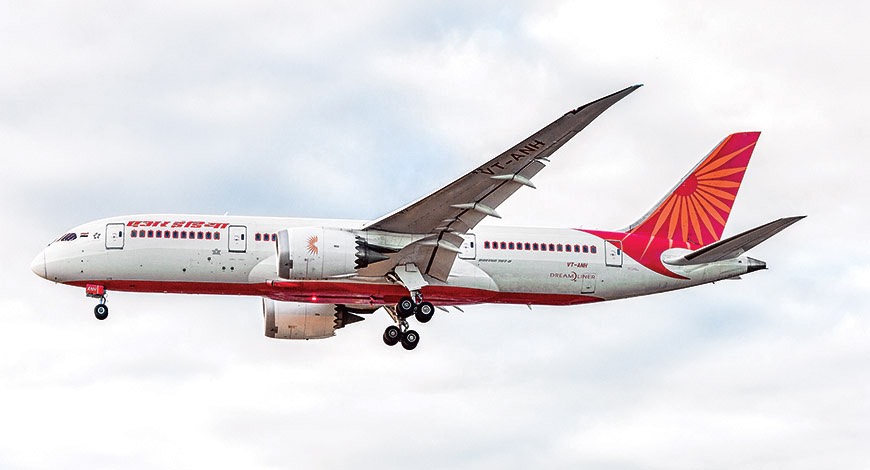 SITA solutions help airlines reduce baggage losses, be more competitive and optimise their costs while increasing agility and efficiency. SITA is helping Indian airlines with a consistent, global approach to baggage processing with capability of end-to-end baggage tracking/tracing and improved processing of mishandled baggage. SITA’s total fares and pricing management enables leading private carrier Jet Airways to automate end-to-end business processes required to manage and distribute fares competitively. This ensures that fares are appropriately charged to support and enforce revenue management and sales strategy, across multiple channels locations and time zones. A unique SITA proposition has helped many Indian carriers to convert fixed costs into a pay-as-you-use model— delivering significant savings and avoiding the burden of capital expenditure. Vistara and Air India are taking advantage of a catalogue of on-demand communication services (like bandwidth) for new connectivity and expansion which enable greater agility and go-to-market. SITA helps Indian carriers with proactive response to fast-changing market dynamicssuch as helping with IT readiness during opening up of new route destinations, and with effective crisis/situation management — for example, immediate scaling up of operations and re-accommodation to manage unplanned demand.
SITA solutions help airlines reduce baggage losses, be more competitive and optimise their costs while increasing agility and efficiency. SITA is helping Indian airlines with a consistent, global approach to baggage processing with capability of end-to-end baggage tracking/tracing and improved processing of mishandled baggage. SITA’s total fares and pricing management enables leading private carrier Jet Airways to automate end-to-end business processes required to manage and distribute fares competitively. This ensures that fares are appropriately charged to support and enforce revenue management and sales strategy, across multiple channels locations and time zones. A unique SITA proposition has helped many Indian carriers to convert fixed costs into a pay-as-you-use model— delivering significant savings and avoiding the burden of capital expenditure. Vistara and Air India are taking advantage of a catalogue of on-demand communication services (like bandwidth) for new connectivity and expansion which enable greater agility and go-to-market. SITA helps Indian carriers with proactive response to fast-changing market dynamicssuch as helping with IT readiness during opening up of new route destinations, and with effective crisis/situation management — for example, immediate scaling up of operations and re-accommodation to manage unplanned demand.
DC: After the 5/20 rule was scrapped, many private airlines that fly domestic routes decided to fly to international destinations. In fact, these airlines have ordered bigger (wide-body, twin-aisle) aircraft. What kind of challenges do you foresee here, and what would you advise these airlines?
Maneesh Jaikrishna: At SITA we would welcome any initiative that opens the Indian market and helps the industry grow. As the market grows, the competition will become more intense, requiring greater focus on the passenger experience offered.
This is an area where we think we can offer support. Addition of the aircrafts will bring in requirement of exchange of vital aircraft data between the aircraft and ground systems through multiple channels, thus opening new possibilities to enhance the passenger experience on board as well drive new efficiencies in how these aircraft are managed.
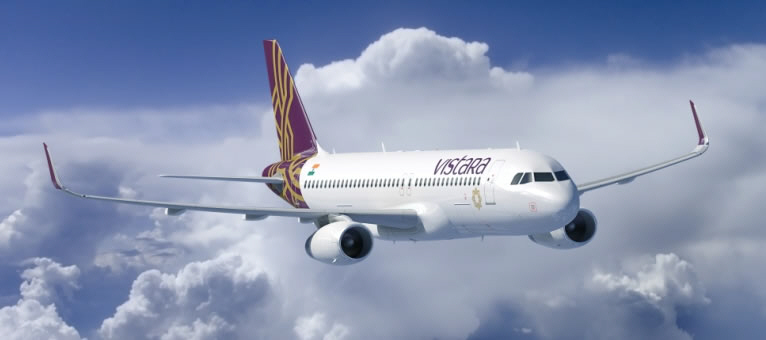 These new aircraft will rely on world-class connectivity in order to exchange information on everything from engine data, passenger requirements, to updates at the destination. This requires reliable, fast connectivity no matter where the aircraft finds itself. At SITA we are working with airlines globally to support that connectivity and ensure that the full benefits of connected aircraft can be unlocked. Considering that 95 per cent of all international destinations covered by SITA’s extensive communications network, airlines will certainly benefit from expansion to international destinations.
These new aircraft will rely on world-class connectivity in order to exchange information on everything from engine data, passenger requirements, to updates at the destination. This requires reliable, fast connectivity no matter where the aircraft finds itself. At SITA we are working with airlines globally to support that connectivity and ensure that the full benefits of connected aircraft can be unlocked. Considering that 95 per cent of all international destinations covered by SITA’s extensive communications network, airlines will certainly benefit from expansion to international destinations.
DC: Can you cite some of the latest technologies that SITA has introduced globally? When and how will you bring all this to India?
Maneesh Jaikrishna:At SITA our focus is to explore technologies that help the various stakeholders across the industry work more effectively together, improve the operations of both airlines and airports as well as improve the overall passenger experience.
As part of our focus on innovation, we are exploring technologies such as Artificial Intelligence, blockchain and biometrics. For example, blockchain is a technology that could drive collaboration. In 2018 we are exploring cases across baggage, identity management, cargo and flight data. We also launched the Aviation Blockchain Sandboxwhere we are inviting air transport organisations to work together so that we can collectively see how blockchain could work across our industry.
We also see biometrics as a key technology to streamline passenger flow in the airport and across multiple stakeholders including airlines, airports and control authorities. We have demonstrated this in the US, where in a world-first, JetBlue and the US Customs and Border Protection used SITA’s biometric scanning technology in place of the traditional boarding pass and ID check and a government border check (using SITA’s Smart Path). This combined an airline and government check in one step, where passengers simply step up to a camera and have their picture taken.
We used the same technology at Orlando airport with British Airways and the CBP. We gave British Airways’ passengers the option of biometric boarding at the gate, on flights from Orlando to London Gatwick, an almost 100 per cent take up, and (these airlines) were able to board international flights with almost 240 passengers in around 10 minutes. Orlando have now chosen SITA’s solution for biometric exit– to be deployed at all of their 30 international gates.
With such advancement in technology in the aviation industry, we have seen a lot of these being implemented globally. Slowly over a period of time, we could see these solutions and services make its way in India as well.
Responses to our questionnaire to SITA were received via e-mail.

